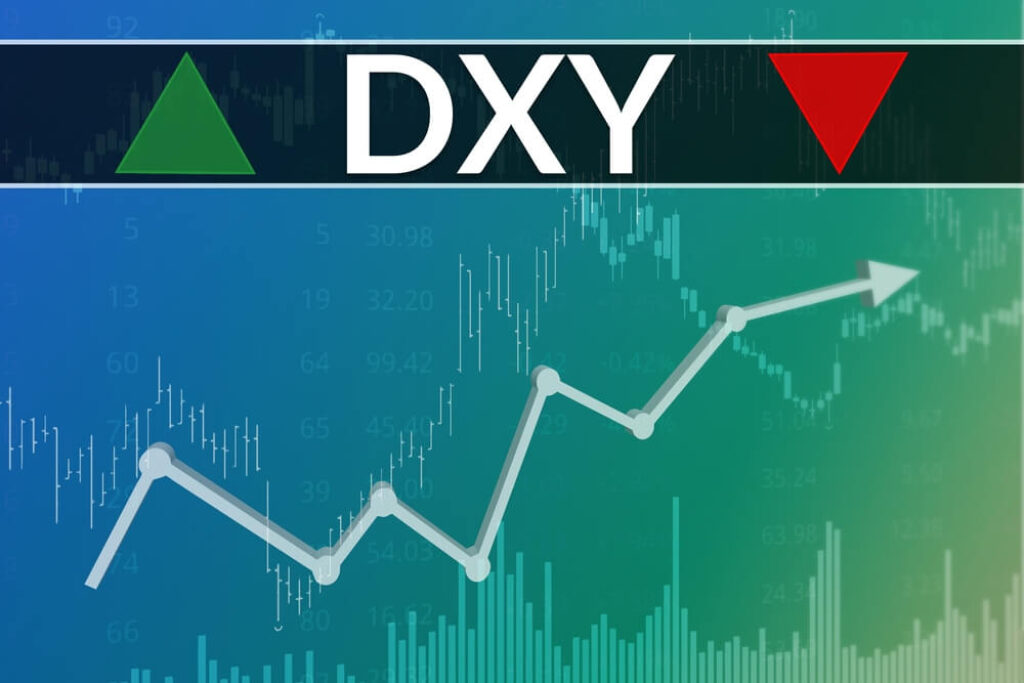
The foreign exchange market is a dynamic and highly volatile environment where traders navigate through various currencies and exchange rates. One crucial factor that significantly influences currency movements is the U.S. Dollar Index, commonly referred to as DXY.
Understanding the impact of dxy on trading positions and incorporating it into risk management strategies is vital for safeguarding trades and maximizing profitability. In this article, we will explore the power of risk management and how incorporating DXY analysis can enhance trading outcomes.
Table of Contents
Understanding DXY and Its Significance

Source: amarkets.com
The U.S. Dollar Index (DXY) is a well-known benchmark that assesses the dollar’s value in comparison to a number of other key currencies. It gives traders vital information about the US dollar’s strength or weakness on the world market. Traders may have a better idea of the general mood and impending changes in the currency market by keeping an eye on DXY.
The DXY analysis tool may be used by traders to determine the possible effects of currency movements on their trading. By assisting with the discovery of links between DXY movements and specific currency pairings, it supports traders in making better decisions and lowering their risk exposure. Traders may successfully manage their holdings and lower the possibility of big losses by staying informed of DXY swings.
The use of risk management techniques that include DXY research may provide traders a competitive edge. In reaction to changes in the US dollar’s value, they could modify their holdings, boosting profits and lowering losses. Understanding the significance of DXY and implementing it into risk management processes may help traders perform better.
The parts that follow will go through how DXY analysis might be usefully incorporated into various risk management strategies.
Risk Management Techniques Enhanced by DXY Analysis

Source: itprotoday.com
- Position Sizing and Leverage – Incorporating DXY analysis allows traders to adjust their position sizes and leverage based on the strength or weakness of the U.S. dollar. If DXY indicates a strong dollar, traders may consider increasing their position sizes or leverage to capitalize on potential gains. Conversely, if DXY signals a weak dollar, reducing position sizes or leverage can help mitigate potential losses.
- Stop-Loss and Take-Profit Levels – By considering DXY analysis, traders can set appropriate stop-loss and take-profit levels. If DXY suggests a potential reversal or trend change, adjusting stop-loss levels accordingly can help protect profits and minimize losses. Similarly, take-profit levels can be adjusted based on anticipated DXY movements to lock in gains at favorable levels.
- Correlation Analysis – DXY analysis enables traders to identify correlations between DXY movements and specific currency pairs. By understanding these relationships, traders can diversify their portfolios and reduce risk exposure. For example, if DXY shows a strong negative correlation with a particular currency pair, incorporating it into the portfolio can act as a hedge against adverse movements.
- Market Analysis and Timing – Monitoring DXY alongside other market indicators allows traders to make better-informed decisions regarding market entry and exit points. DXY analysis provides insights into overall market sentiment and potential trends, helping traders time their trades more effectively and reduce the risk of entering unfavorable positions.
Incorporating DXY analysis into risk management techniques enhances traders’ ability to adapt to changing market dynamics, make informed decisions, and mitigate potential risks. By utilizing the power of DXY in risk management strategies, traders can safeguard their trades and optimize their trading outcomes.
Conclusion

Source: youtrading.com
In the fast-paced world of trading, effective risk management is crucial for preserving capital and achieving long-term success. Incorporating DXY analysis into risk management strategies provides traders with a powerful tool to navigate the forex market with confidence.
Understanding the significance of DXY allows traders to make informed decisions about position sizing, leverage, stop-loss levels, and take-profit targets. By considering DXY dynamics, traders can adapt their strategies to capitalize on favorable market conditions and minimize the risk of significant losses.
Furthermore, integrating DXY analysis into risk management practices helps traders develop a comprehensive trading plan, manage emotions, and learn from past experiences. Regular monitoring of DXY movements allows traders to make timely adjustments to their positions and optimize trading outcomes.
To further enhance risk management effectiveness, seeking professional advice and mentorship can provide valuable insights and guidance.
By harnessing the power of risk management and incorporating DXY analysis, traders can safeguard their trades, minimize risks, and improve their overall profitability in the challenging and dynamic forex market.
Remember, successful trading is not just about making profitable trades, but also about effectively managing risks along the way.







